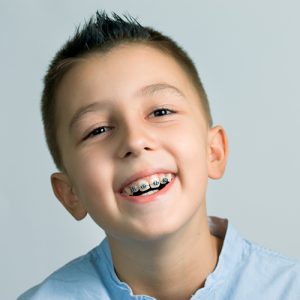HYGIENE / EATING WITH BRACES / SORENESS / EMERGENCY CARE / SPORTS AND BRACES / RETAINERS
Brushing & Flossing
When you have braces, it is very important to brush and floss after every meal in order to keep your teeth and gums healthy throughout your orthodontic treatment. If you need help choosing the right toothbrush, toothpaste, and dental floss, please ask us and we can help you choose the right products for your teeth and your appliance.
Brushing with Braces
Brush your teeth for 2 minutes after every meal with a soft-bristled, small-headed toothbrush and fluoride toothpaste. As an alternative, you can use a powered toothbrush to increase your brushing effectiveness. Brush the outside and inside surfaces of your teeth using small, gentle, circular motions while positioning the head of the toothbrush at a 45-degree angle to the gum line. Brush your teeth’s chewing surfaces and the inside surface of your front teeth, using short, gentle, back-and-forth motions. Pay close attention to the areas around your brackets or other appliances.
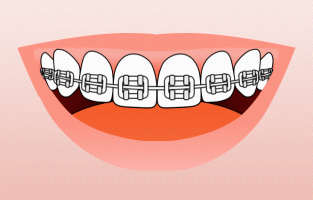
Flossing after every meal will help keep your teeth and braces clean, which will also help keep your treatment time on track. To floss with braces, use a floss threader or special orthodontic floss to thread the floss behind each wire. Wrap the ends of the floss around your pointer fingers of both hands, leaving a few inches of taught floss between them. Gently slide the floss between each set of teeth, using a back-and-forth motion. Floss the sides of each tooth beneath the gum line to remove plaque and food particles. Repeat this process until you have flossed all of your teeth. If you find that your floss is not removing all of the food particles between your teeth and around your braces, ask us about a water flosser!
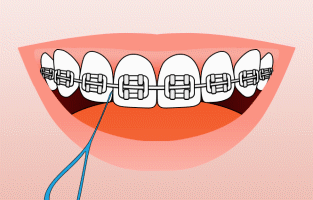
Eating with Braces
Braces are made so they can eventually be removed. If too much force is placed on the braces during treatment, it is possible that they may dislodge from the tooth surface. Avoiding certain foods and being cautious with what you are eating will minimize broken brackets and emergencies and will help us treat you or your child as efficiently as possible. Do not worry, you will be eating popcorn and potato chips again in no time! The foods that are most problematic with braces are sticky foods and hard foods. We have compiled some examples below to give you an idea.
Foods to avoid with braces:
- Chewy foods — licorice, bagels, pizza crust
- Crunchy foods — potato chips, Wheat Thins
- Sticky foods — caramel candies, chewing gum, Starbursts
- Hard foods — nuts, hard candies, ice
- Foods that require biting into — apples, corn on the cob, carrots (cutting fruits and vegetables into pieces that usually require biting into will make it easier for you to eat)
Foods you CAN eat with braces:
- Dairy — milk-based drinks, pudding, soft cheese
- Breads — muffins, tortillas, pancakes
- Grains — cooked rice, pasta
- Meats/poultry — lunch meats, chicken, beef
- Seafood — salmon, crab cakes, tuna, etc.
- Vegetables — potatoes, fruits, steamed spinach, applesauce, bananas, fruit juice
- Treats — milk shakes, ice cream, Jell-O, etc.
EMERGENCY CARE
It is very rare for true orthodontic emergencies to occur, but if they do, we are here to help! Please call our office if you have an issue that is causing pain that cannot be resolved on our own. We will be able to schedule an appointment to resolve the problem, or if we are not in our office, please follow the voicemail instructions to reach our emergency line after hours.
You might be surprised to find out that many of the problems that cause pain from the braces can be temporarily relieved until we see you. If there is a loose piece you can remove, please remove it from your mouth and put it in a baggy and bring it with you to your appointment.
Soft wax that we provided you when you got your braces on can be used to cover any pokey wires or brackets that are irritating your lips or gums. If the wire has slid to one side, you can pull it back to the other side with needle-nosed pliers, and replace it in the tube on the back tooth.
After alleviating your discomfort, we highly recommend calling our office to come in to make sure everything is in its proper place. Allowing your appliance to remain damaged for an extended period of time may result in disruptions to your treatment plan.
General Soreness
When you get your braces on, you may feel general soreness in your mouth, and teeth may be tender to biting pressures for 3 to 5 days. This is completely normal and is a part of the tooth-moving process. A soft diet may be the best option if your teeth are very tender.
A warm salt-water rinse can help irritated gums and cheeks. Dissolve one teaspoonful of salt in eight ounces of warm water, and rinse your mouth vigorously. A HYDROGEN PEROXIDE RINSE can also be helpful to alleviate pain and swelling.
Placing ORABASE on the affected cheeks or lips will help alleviate pain; Orabase can be found in a pharmacy or bought online. If the tenderness is severe, we recommend taking acetaminophen (Tylenol) or whatever you normally take for a headache or similar pain. Aspirin, ibuprofen (Motrin, Advil), and naproxen sodium (Naprosyn, Anaprox) may slow the tooth-moving process, so we recommend Tylenol if it is available.
It is normal for the lips, cheeks, and tongue to become irritated for 1 to 2 weeks as they become accustomed to the new appliances in your mouth. To minimize the discomfort, you can use the wax you received to cover any metal in your mouth that is irritating your mouth.
Headgear
We rarely use headgear in our office. If you are in headgear and are uncomfortable, you are most likely not wearing the appliance properly. Please refer to the instructions provided by our office or give us a call. If the facebow (metal piece) is bent, please call us for assistance. The headgear should hurt less the more it is worn, so make sure you are wearing it for the correct amount of hours every day.
Loose appliance
If your appliance is poking you, place wax on the part that is irritating your mouth.
Loose bracket
If your bracket or band is still attached to the wire, you should leave it in place and put wax on it if needed for comfort. If the bracket or band can be removed easily, place it in an envelope and save it to bring to your next appointment. A loose bracket is not an emergency unless it is causing pain. If there is no discomfort with your broken bracket, please call us during office hours to make an appointment to fix the broken bracket.
Loose wire
If you have a loose wire, you can try to use tweezers or needle-nosed pliers to put the wire back into place.
If you cannot place the wire into a comfortable position, and covering the end of the wire with wax does not help, you may try to use small fingernail clippers to clip the wire behind the last tooth (as far back as you can go). If the end of the wire is still sharp, place wax on it and call our office to come in.
Poking wire
Use a pencil eraser to push the pokey wire back toward the tooth. You may place wax over the wire if it is still irritating your gums or lip.
Sports Dentistry
Injuries to the teeth and mouth are common in sports. It is worthwhile to protect your son or daughter’s smile if your child plays sports, for aesthetics as well as health reasons. Sports dentistry is the prevention and treatment of dental injuries and related oral diseases, as well as the sharing of information and equipment designed to help protect the jaw, mouth, teeth, and face of athletes of all ages.
Common Dental Injuries in Sports
Knocked-out Tooth:
- Call your dentist as soon as possible if a permanent tooth is knocked out! Time is critical in these situations. In general, there is a 30-minute window of opportunity to re-implant a tooth in its socket.
- We recommend that a dentist re-implants the tooth rather than trying it yourself.
- The best liquid to transport a tooth in is cold milk. If milk is not available, use saliva (if possible), saline, or hold the tooth carefully in your mouth.
Chipped or Cracked Tooth:
- Do not let the tooth fragment dry out, and do not wrap it up.
- Do not touch the tooth root if you can avoid it. There are vital cells on the root surface that are very sensitive.
- We will use an X-ray of the tooth to determine the treatment necessary.
- For a serious chip that exposes the pulp of the tooth, get to our office as soon as possible.
- If a tooth is chipped or cracked, sometimes the tooth can be fixed with a filling or bonding alone.
- Sometimes a tooth is cracked or chipped in a way that affects the nerve, and a more complicated treatment will be needed.
- If a tooth is moved due to trauma, see us as soon as possible.
- Avoid moving the tooth back on your own if you can get to a dentist in a timely manner.
- For any mouth discomfort before you get to our office, apply ice.
Preventing Injury
One of the best ways to prevent injury to your child’s teeth and mouth is to have him or her to wear a MOUTHGUARD while playing sports. If you are in braces, be sure to buy a mouthguard made for braces. There are several types of mouthguards to choose from, and we can help you choose the best one for your athlete’s particular needs.
RETAINER INSTRUCTIONS
- Wear your retainer(s) every night, unless directed otherwise.
- Make sure your retainer is placed in the case when it is not in use. Pets love to chew on retainers!
- Clean the retainer thoroughly once a day with a toothbrush and warm water. Brushing retainers removes the plaque, and eliminates odors. RETAINER BRITE or other orthodontic appliance cleaners can be used but do not take the place of brushing.
- Initially, you may find it difficult to speak with your retainer. This is normal and should change as you become more accustomed to your retainer.
- Retainers are breakable, so treat yours with care. If your retainer becomes lost or broken, call us immediately. Do not wait for your teeth to move before calling, as it is much easier to make another retainer rather than using braces or aligners to re-straighten your teeth!
- If you have any questions or concerns about your retainer, or you believe it needs adjusting, call us. Do not try to adjust it yourself.
- Always bring your retainer to your appointments.
- Retainer replacements are not very expensive. With proper care, they should last for years!
- Keep retainers away from hot water, hot car dashboards, pockets, the washing machine, and napkins, as they may distort or get lost.
Please feel free to contact us at 385-210-1111 if you have any questions about your orthodontic care and would like to meet with our orthodontists in Riverton, Utah. We also welcome patients from Herriman and Bluffdale.

